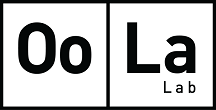Book Dubai Workshops in our Alserkal Avenue Lab
Attend Dubai Perfume Workshops and Events. Beginner and Advanced Perfume Making Experiences. Located at Warehouse 48 Alserkal Ave. Open Daily.
Book Singapore Workshops at our new Amoy Street Lab
Attend Singapore Perfume Workshops and Events. Beginner and Advanced Perfume Making Experiences. Located at 71 Amoy Street 069890. Open Daily.
Testimonials
BESTSELLERS
Shop our bestselling perfumes and experiences
Seen In
...an unforgettable experience...
”...an unforgettable experience...
”...an unforgettable experience...
”Our stores
Locations & hours
Alserkal Avenue, Warehouse 48, Al Quoz Industrial Area 1
UNITED ARAB EMIRATES
OPEN DAILY
Mon - Sun: 10am - 10pm
Some public holidays closed
+971 58 504 7186
2 Alexandra Road, Delta House #02-04, Singapore 159919
SINGAPORE
OPEN DAILY
Mon - Sun: 10am - 10pm
Some public holidays closed
+65 6873 1140




